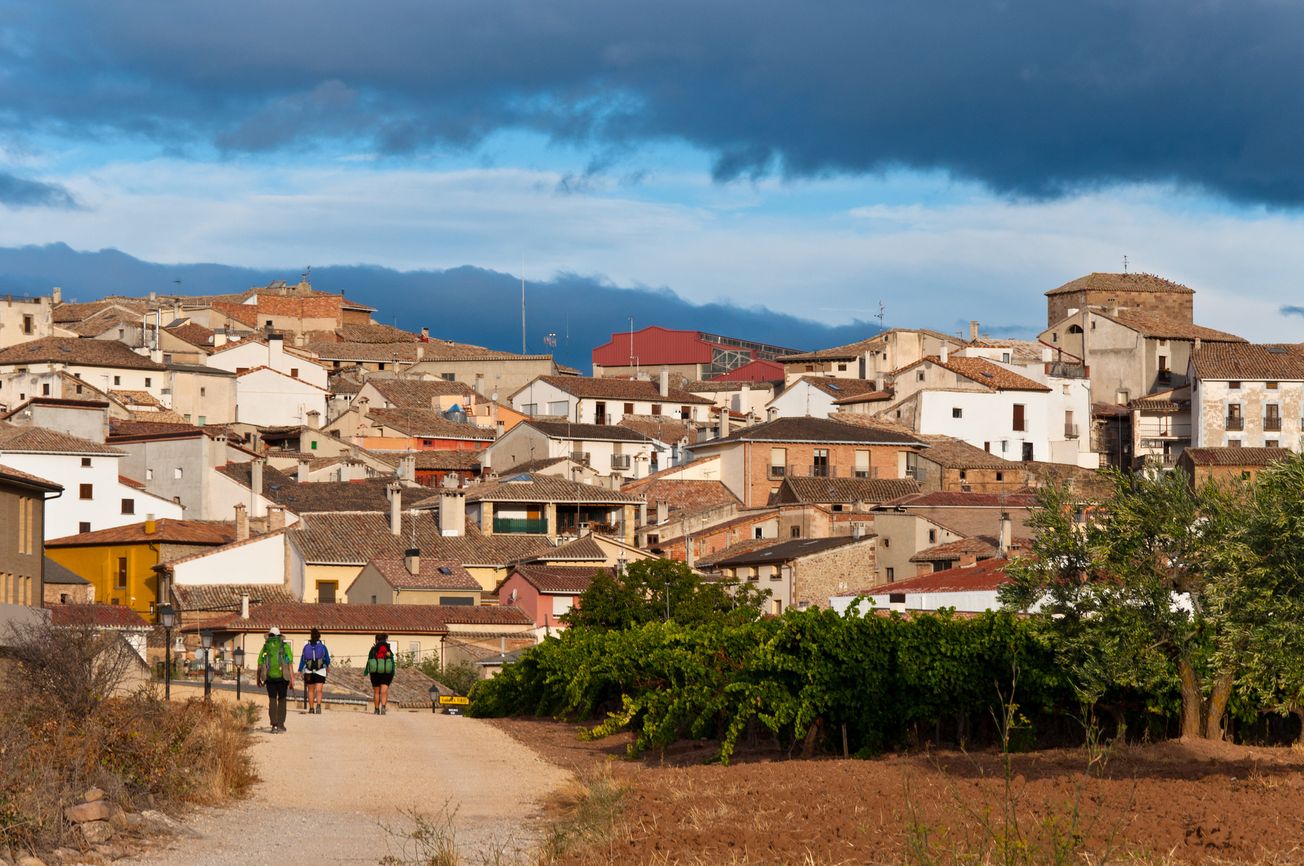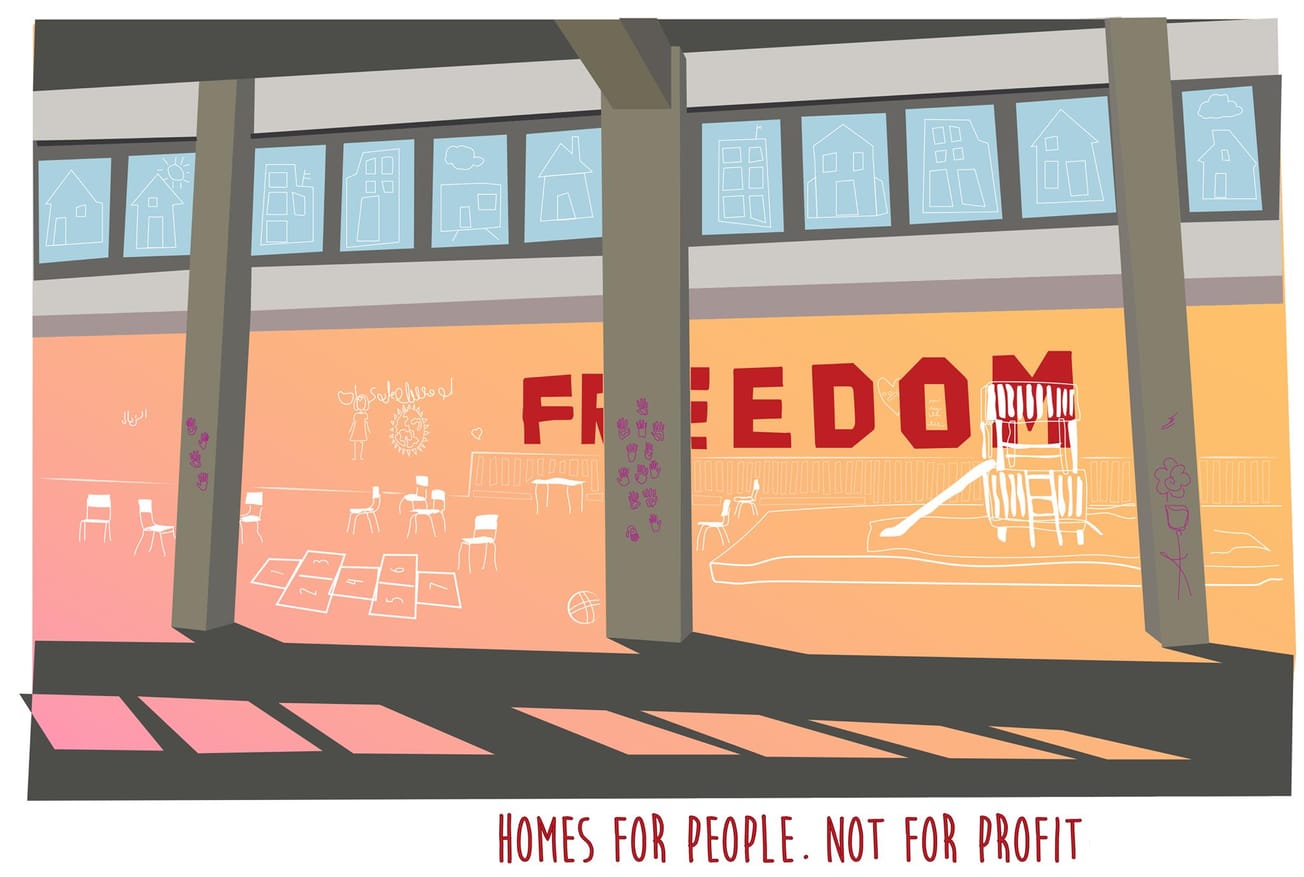I could not have prepared for the jolt to wide-eyed sobriety that sped through me when I arrived in the city.
The scene was Boschian, nightmarish. Bodies dappled in rouge staggered about me and lay sodden on the ground, barking and groaning in unrecognisable languages. The narrow streets were thronged with costumed figures, steaming shit rising up from their cobbles. In La Plaza de La Castilla, vast portentous crowds like clouds engulfed all, pissing, spewing and spilling. An old woman looked out from her window and put a hand to her mouth.
This is Pamplona at fiesta time, home to San Fermin, the famous running of the bulls. Hemingway’s Pamplona is no more. Now the streets are hosed with sangria.
So after two nights sleeping out in the park, disturbed only by revellers and the occasional gaze of torchlight, I set out on a walk that would take me to the west of the country, to Santiago de Compostela, culmination of the famous Camino de Santiago pilgrimage.
[caption id="attachment_5175" align="alignnone" width="607"] Richard Assheton[/caption]
Richard Assheton[/caption]
Walking in Spain had been a dream of mine since reading Laurie Lee’s ‘As I Walked Out One Midsummer Morning’, which documents his rite of passage journey on foot to the heart of a Spain since lost, a land of ancient charm, a country on the edge of a Civil War that would leave it under dictatorship for almost forty years.
The Spain of today is in many ways exceedingly modern: it excels in technology, particularly in medicine, Solar Energy and transport; it has a long-famed and extensive tourist industry; and until this summer it had a world-beating football team.
Walking through the peninsula I saw a different picture. Crossing its countless wheat fields and vineyards I saw its deep roots in agriculture. Marvelling at its churches and cathedrals and sleeping at albergues often subsidised by the church I saw the enduring power and influence of Catholicism.
And everywhere I looked I saw recession, on anguished faces, in empty warehouses and abandoned construction sites and even in the people’s hair – Spain has seen such youth exodus that as I sat with new friends watching the World Cup Final in a small town bar in La Rioja, I suddenly realised that we were surrounded by nothing but grey hair.
Lee spent months walking, working and busking through England before he embarked on a ship to Spain. I did not have the time, nor will, nor wit, to do the same. But I told myself I would hitchhike there.
My mum and sister joked that I would stand for a few days at the end of the drive at home in Northamptonshire with a sign reading ‘BARCELONA’ before soon coming back inside and booking a flight.
But it worked and after six days of feeling lost and stupid trampling through fields next to French motorways and feeling euphoric puffing Marlboro Reds whilst riding shotgun with a mad German-Frenchman in a white van and almost crying in Bluewater Shopping Centre at my failure and sleeping next to roads and train stations and péages and sitting chatting to a kleptomaniacal Lithuanian in a lorry park outside Calais, I arrived in Barcelona.
[caption id="attachment_5177" align="alignnone" width="612"] Richard Assheton[/caption]
Richard Assheton[/caption]
Lee walked his own route, tramping down from Galicia to Madrid and south through Valladolid to Andalucia. The path I took is one of the best-trodden on Earth, beaten down by centuries of hooves, sandals and tyres. It is no stranger to a blistered foot.
Many people plan to walk the Camino for months or years. I did not. Spotting the first of the now wonderfully familiar signs marked ‘Camino de Santiago’ whilst wandering aimlessly in Pamplona, I devised a plan; perhaps I could walk, accompanied by my tent, for three or four days on the trail. I could escape from the bedlam of San Fermin and take stock.
Three days became a month and my feet were suffering from subjection to walk the last 20km barefootI had hitchhiked to Spain to travel all summer; it was only the first week of July and already I was at a loss as to what to do. Then when more than one person - seeing a backpack-clad stranger in a city of Basque fiesta costume - wished me a ‘Buen camino’, the deal was done. I couldn’t waste their kind wishes.
Three or four days eventually became 28 and I walked into Santiago on Wednesday 6th August, my feet suffering from subjection to walk the last 20km barefoot (a mad idea), my mind wrestling with the inevitable end to a magical time.
Many returning pilgrims told me that to convey the experience of the Camino is impossible; that when I got home I should not even try. It really is ineffable. I can speak about the kind and illuminating people I found, to whom I grew close; or the perspective one earns when stepping outside of society, taking time and savouring each moment; or the power of perseverance, of taking each step at a time; or the strength of community and fellowship. I prefer my Dutch friend Franz’s words: ‘You walk. You eat. You sleep. It’s good.’
Featured image: Staffan Andersson








